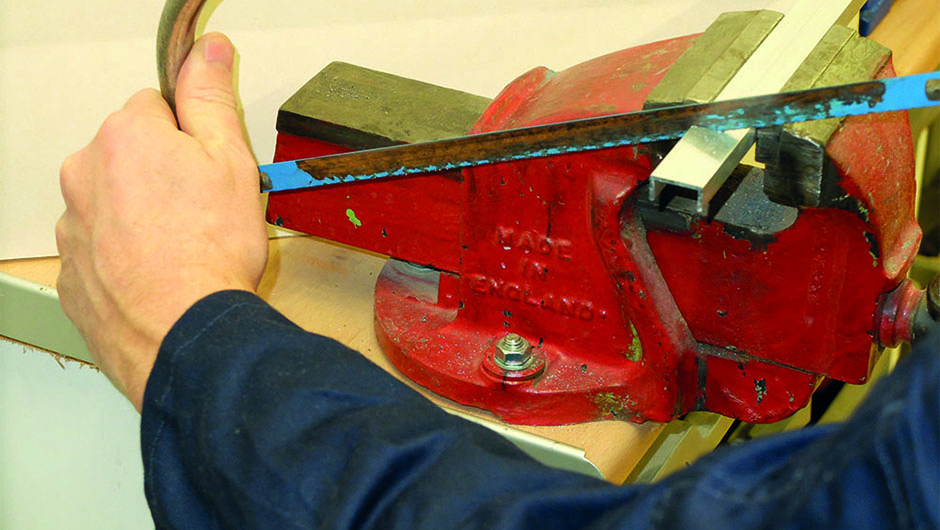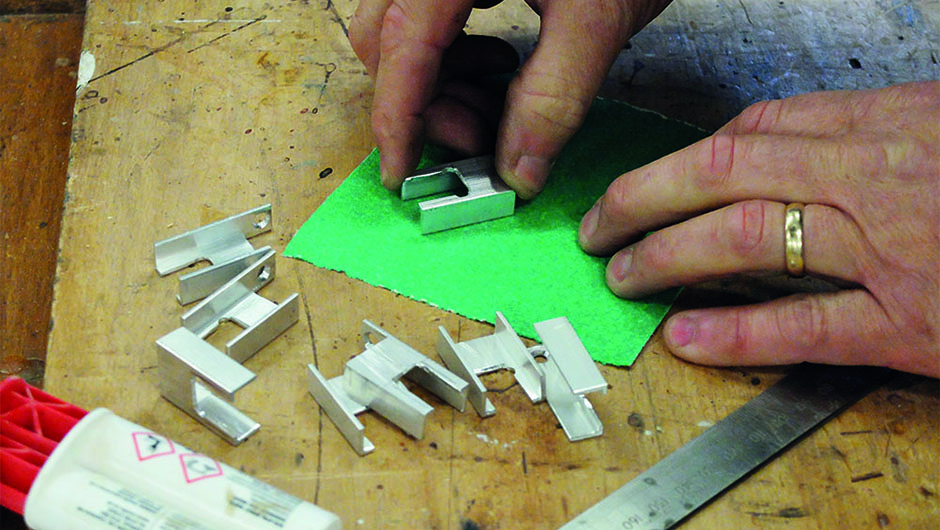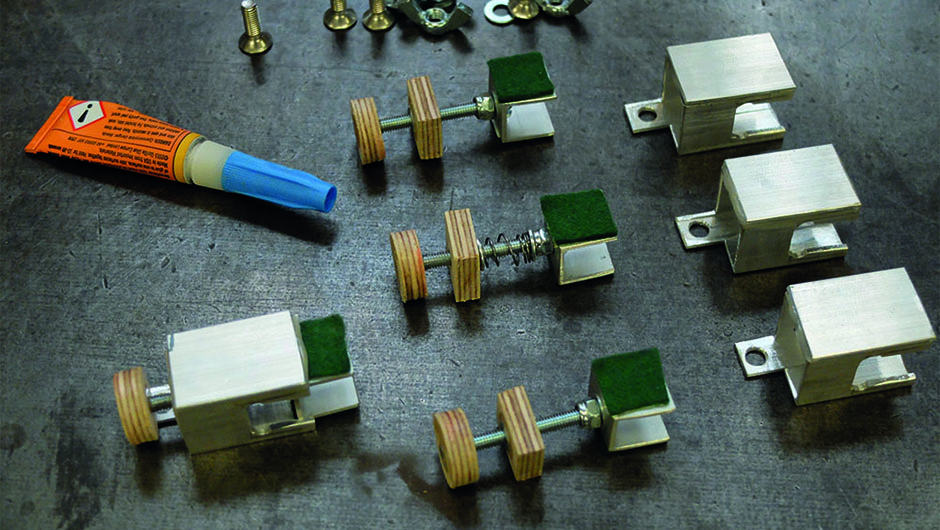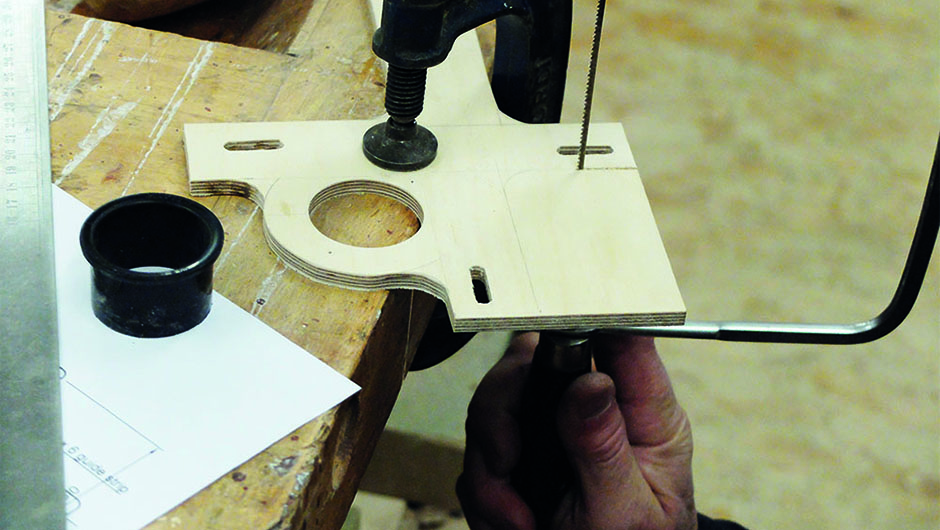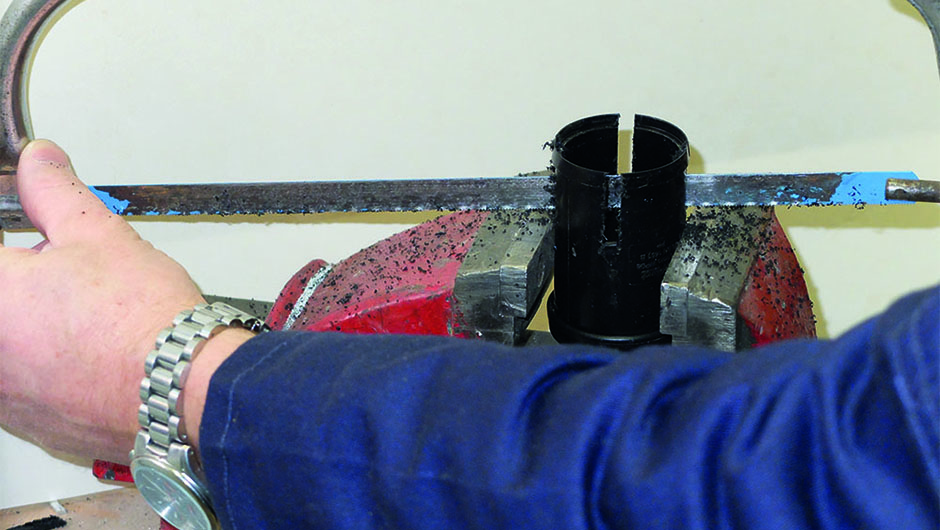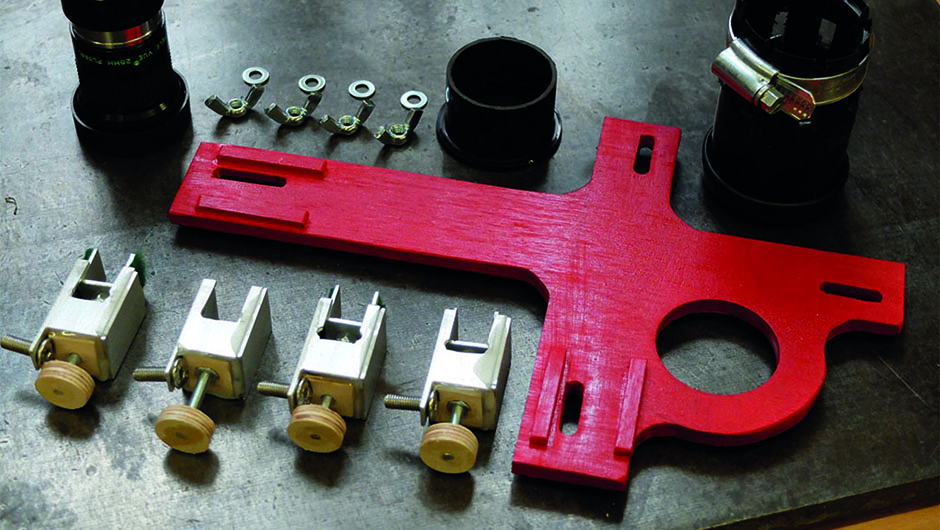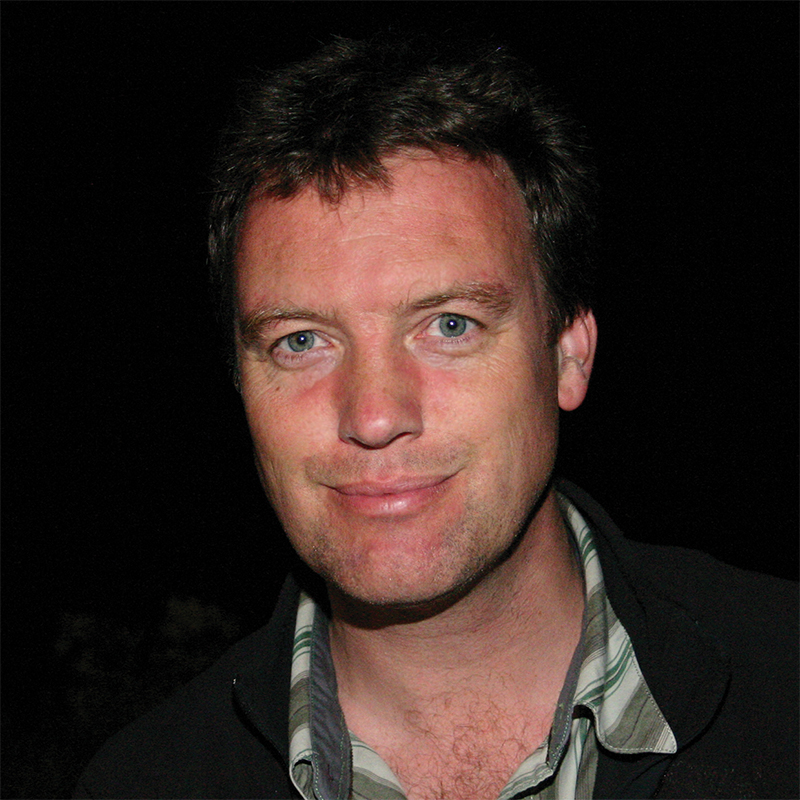This project is an accessory that will help you to take great astrophotos using the camera on your smartphone. Unlike some commercially made versions, our design can be adapted to suit a wide range of phone models.
The method of imaging used is called ‘eyepiece projection’ or ‘afocal projection’ because it involves taking a photograph through a telescope’s eyepiece (unlike ‘prime focus photography’ where the camera replaces the eyepiece).
The camera lens must be firmly supported in a similar position to the eye when visually observing. This is where our adaptor comes into play.
Tools -A hack saw, tenon saw or similar; drill and bits for screws; a 40mm bit for nosepiece hole; files
Materials - A small sheet of good quality 6mm plywood (about A4 size); short lengths of 20x10x1.5mm and 15x15x1.5mm aluminium channel
- Four M4 x 40 CSK or flathead screws; four M4 Nyloc nuts and washers; two M4 nuts; four M5 x 16 (or 20) CSK screws with washers and wingnuts; push-fit PVC plumbing fittings: Floplast 40mm x 40mm straight connector and socket plug; small compression spring (cut in half) to fit over M4 screws; 40mm Jubilee clip; a small quantity of felt/padding material; epoxy resin glue. Some spray paint for the base plate
The phone is held between two pairs of clamps mounted on a rigid baseplate.
This has a nosepiece which securely inserts into a tube that clamps to your scope’s eyepiece.
These two parts are made from plumbing fittings: a push-fit straight connector and a blanking plug for 40mm PVC pipe.
This means that it is easy to attach and remove the whole unit without any fiddling about in the dark.
The clamps have thumbscrews and are spring-loaded, facilitating small adjustments to the alignment, allowing you to centre your phone’s lens precisely over the eyepiece.
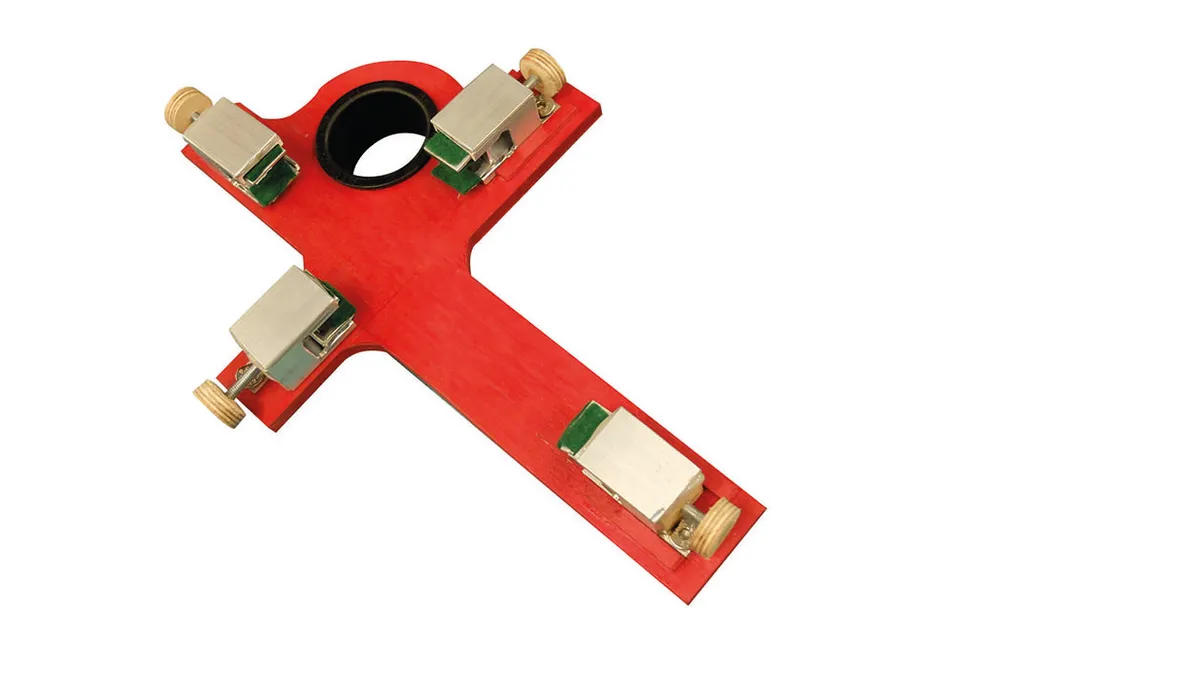
Hold the phone
The eyepiece (and the distance between the eyepiece and camera) magnifies the view of the object.
By exchanging the eyepiece for one of a different focal length, the size of the image can be varied.
Large magnifications do result in dimmer and fuzzier images, so this technique is best suited to bright objects under good conditions.
Our prototype was designed around a Google Phone 2, which has a fairly large case, but by slightly modifying our downloadable plans you can adapt the design to suit any phone of up to 12mm thick (adjust the amount of soft padding inside the clamps to grip your phone).
We found it helpful to attach the finished clamps to our phone and draw around them on a scrap of card to check their positions before cutting out the plywood base plate.
Many phones have their lens behind the top right corner of the screen, but if your phone is different it should be easy to adapt the layout of the base plate to suit.
We fitted our plumbing connector eyepiece tube to a 12mm Plössl, but we found that most of our standard Plössl eyepieces fitted well.
You might consider buying and fitting a few of these inexpensive tubes to a selection of your eyepieces so you can experiment during an imaging session without having to unscrew anything.
